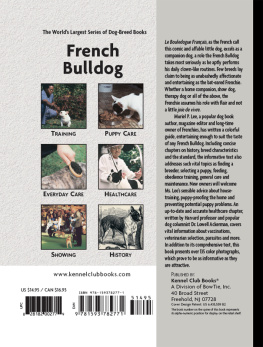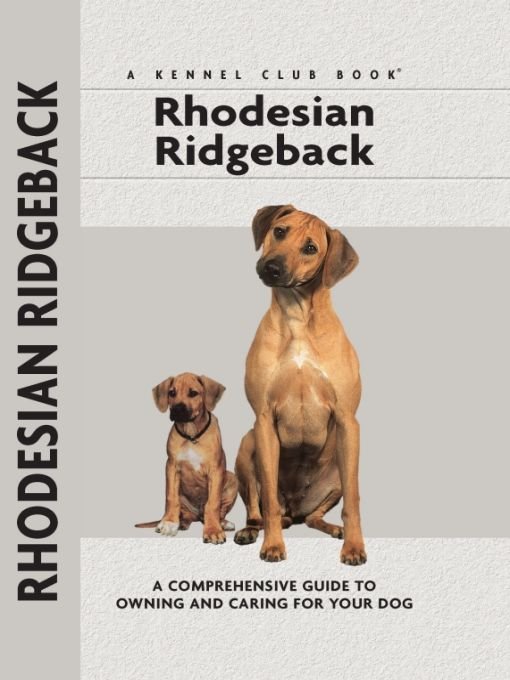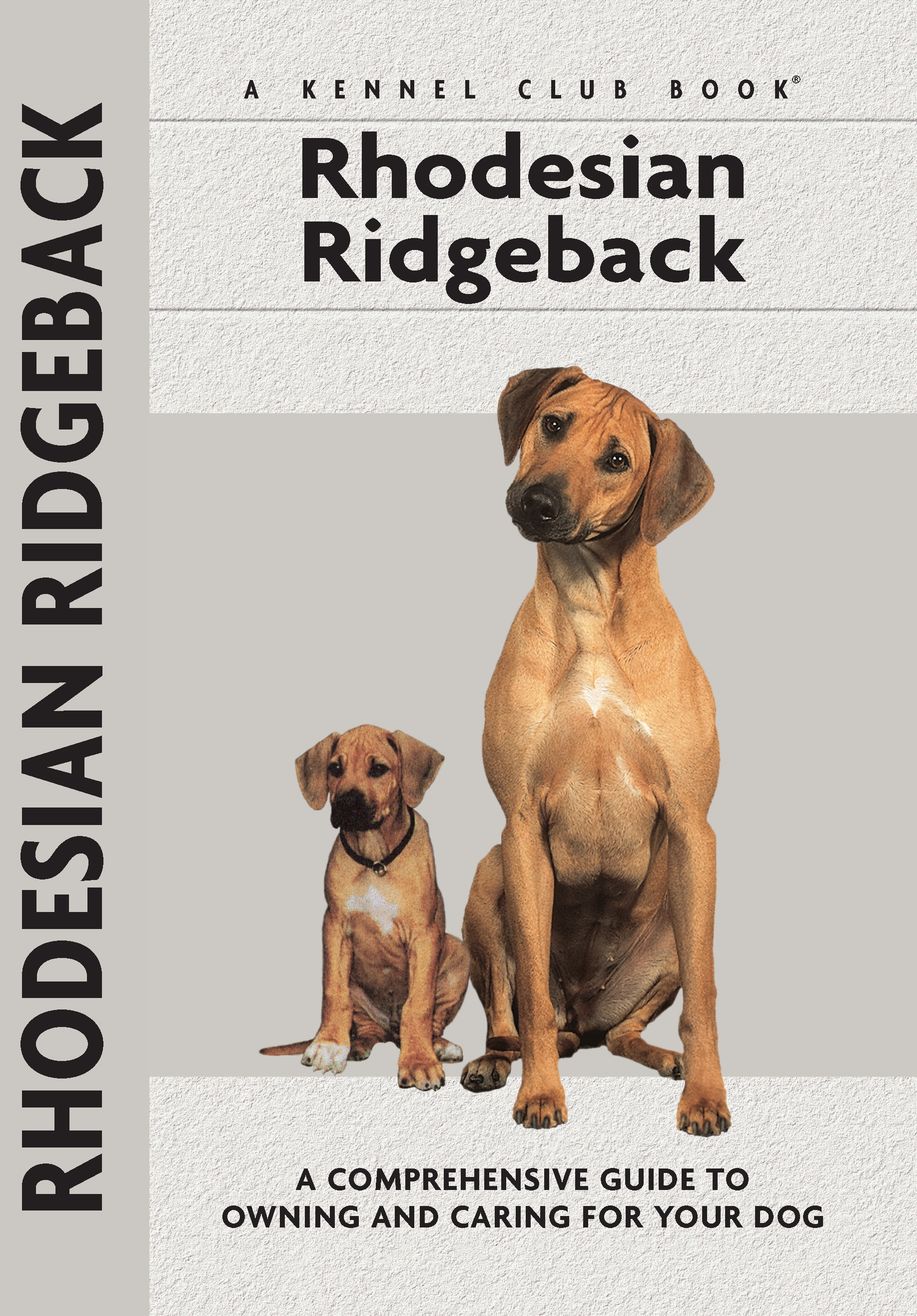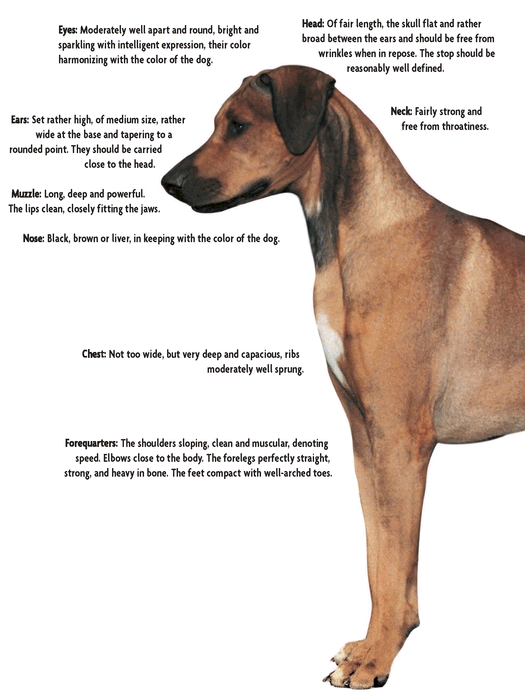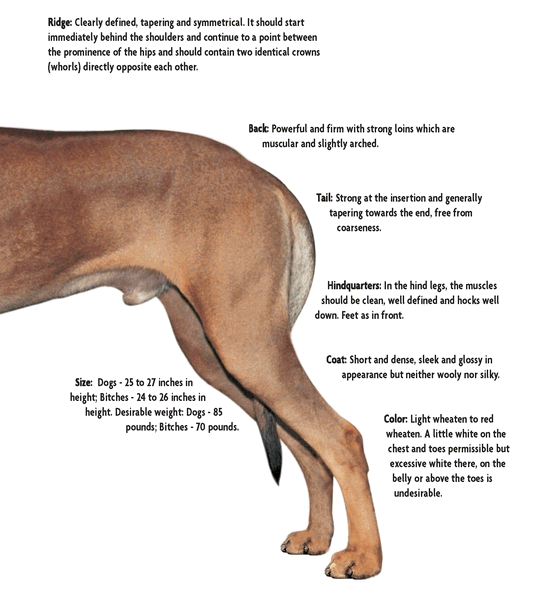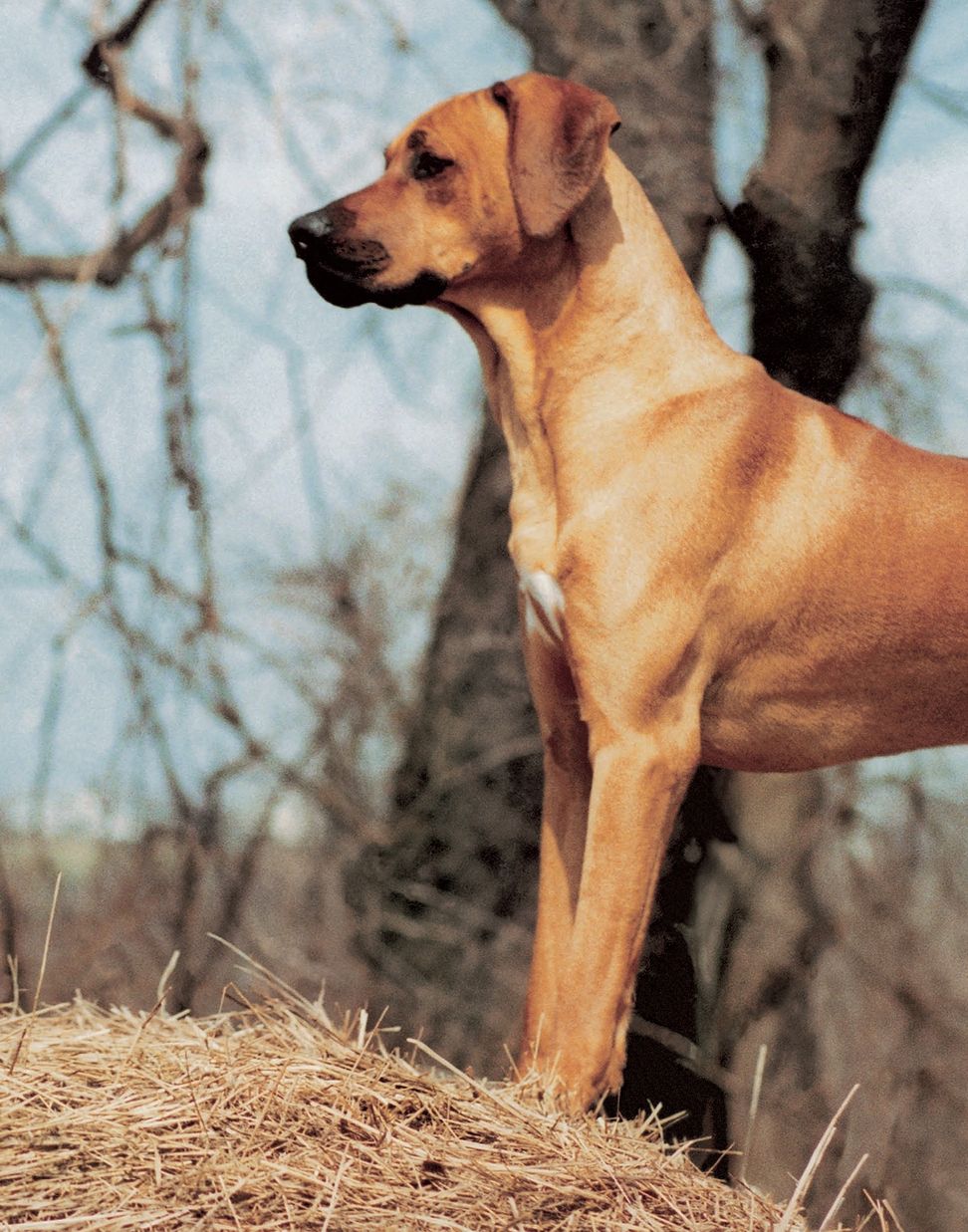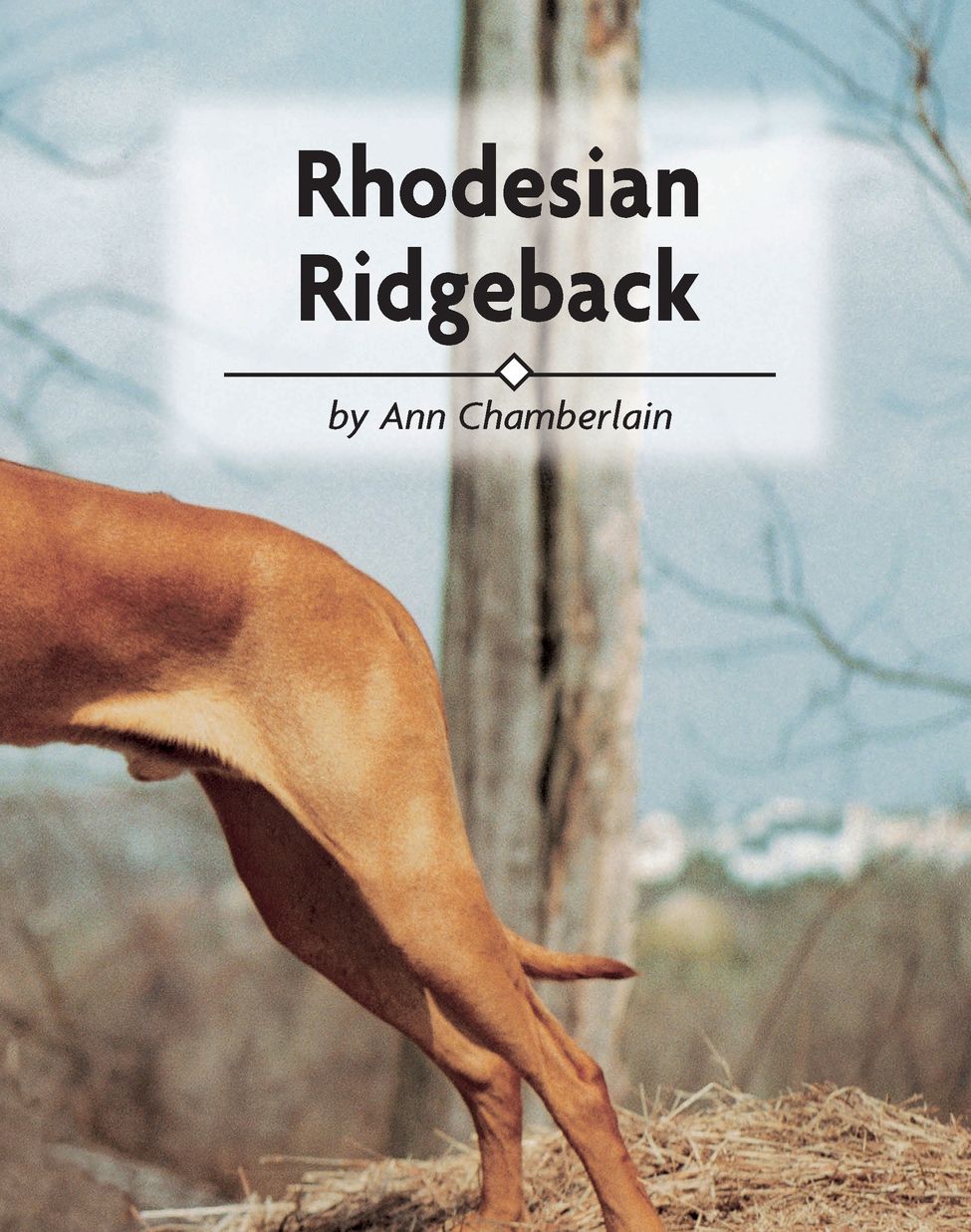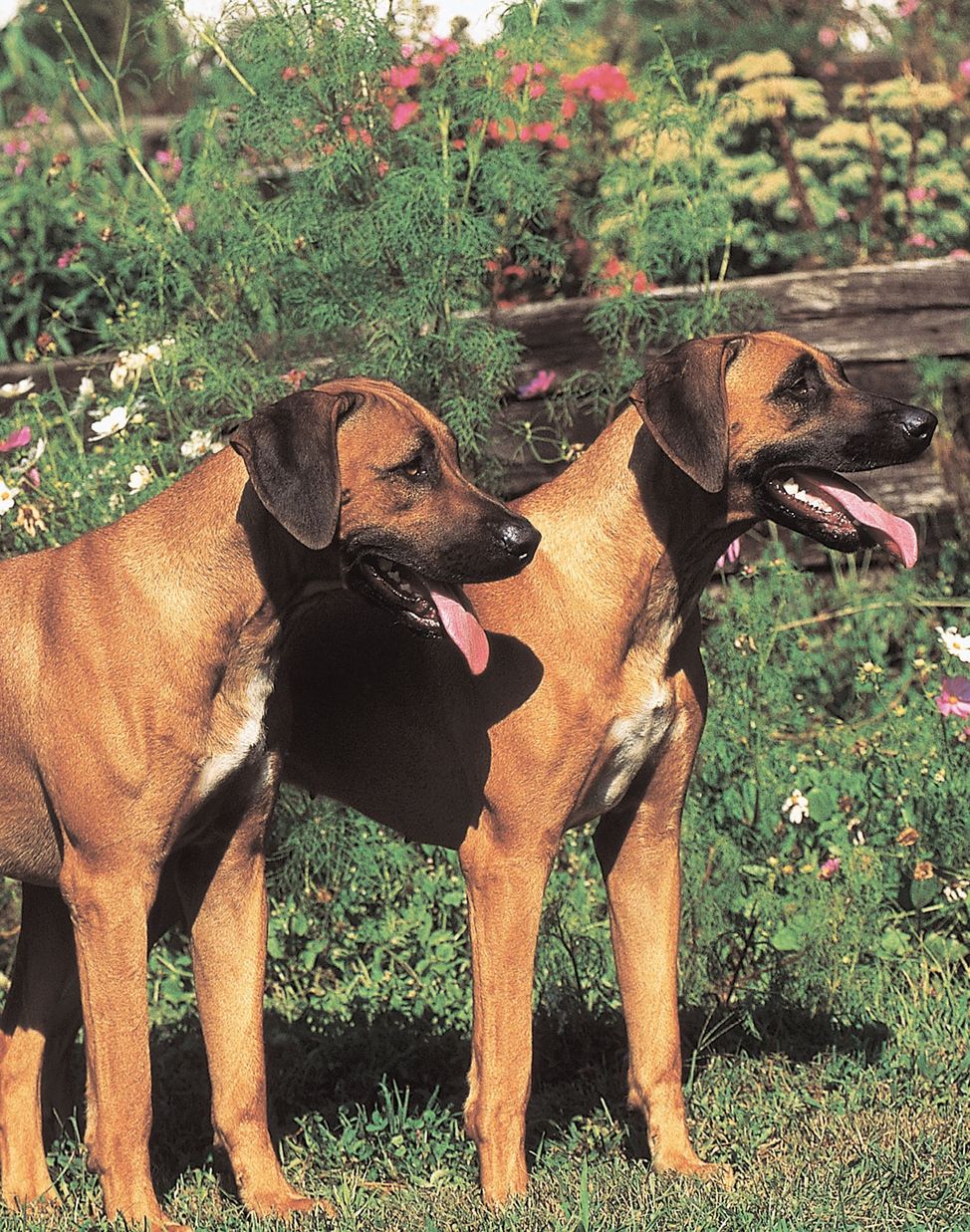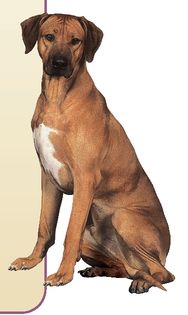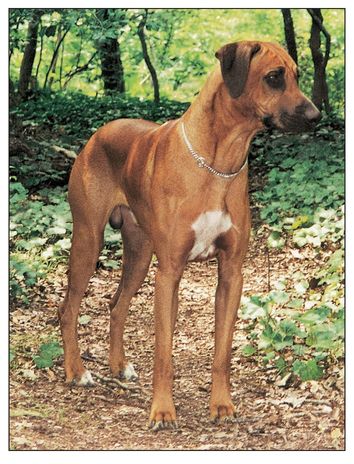Table of Contents
Physical Characteristics of the Rhodesian Ridgeback
(from the American Kennel Club breed standard)
The Rhodesian Ridgeback is a wonderful pet, hunting and working dog, steeped in African history and legend.
HISTORY OF THERHODESIAN RIDGEBACK
The hunter lay on the cool granite of the kopje, looking over the edge to the plain below. The sun was just starting to touch the top of the Mopani trees as he spied the small herd of gazelles approaching the water hole. The dogs stood beside him, quivering with anticipation and scenting the breeze as it slowly rose up the hill. The gazelles, unaware of their audience, reached down to drink. The dogs were loosed and the chase was on. The youngest dog set after an immature buck, while the rest of the herd scattered and fled in all directions. The two older dogs took up the chase, each ranging wide. As the gazelle began to tire, it dodged left, where the oldest and most experienced dog was waiting. One leap and the gazelle was down. All three dogs dashed in for the kill, while the excited hunter urged them on, waving his spear. When the buck was dead, he called the dogs off. Preparing to return to the camp, he gutted the buck, gave the dogs their rewards, and slung the carcass up over his shoulders, starting the long trek back. As he walked, he sang the praises of his ridged hunting dogs, making the song that would be given to his clan that evening.
While this story is fanciful, it is the true beginning of the Rhodesian Ridgeback. The breed as established today is quite recent. However, the origins of this dog are very ancient. The first ridged dogs were found in Egypt, about 3000 BC. This is known from carvings and paintings found in tombs of the Pharaohs. One carving depicts a drop-eared dog with a clear ridge. Another painting shows prick-eared ridged dogs chasing gazelles in the desert. If one looks at color patterns and behavior of many breeds that arose in the same area, Pharaoh Hounds, Azawakhs, Salukis, Greyhounds, Sloughis, even Ibizan Hounds, the ancient common heritage is clear. In Hutchinsons Dog Encyclopaedia, a picture of the first three Sloughis imported into Holland shows two of them had clear ridges, exactly as the Rhodesian Ridgeback does today.
MEET A FELLOW SOUTH AFRICAN
The Rhodesian Ridgeback is not the only pure-bred dog that hails from southern Africa. Recently another South African native has attracted the dog fancys attention: the Boerboel. Developed by the Afrikaner people, the descendants of the Dutch settlers and French Huguenots, the Boerboel is a working dog that resembles the Bullmastiff and does not measure less than 26 inches at the shoulder (for a male). The breed is used to defend the family living in the bush from a variety of wildlife, including hyenas, leopards and lions.
As a general rule, the quality of Rhodesian Ridgebacks is fairly uniform except for the ridge of hair growing on their backs. Some fine dogs are born without the ridge even though both of their parents were fully ridged.
The South African Boerboel, like the Rhodesian Ridgeback, comes from southern Africa. It is a large mastiff-type dog that is used for guarding and hunting.
The first white men to see ridged dogs were the Portuguese, who landed at what is today Cape Town, South Africa in 1487. The Boers later called the indigenous people Hottentots, although the latter referred to themselves as Khoi-khoi or man-man. The Portuguese remained until 1510, when the Khoi massacred the garrison in retaliation for one soldiers taking a Khoi hostage. The Khoi stampeded cattle over the garrison and killed the Portuguese with firehardened sticks despite the well-trained armed force they faced. Man and dog were left undisturbed until 1591, when an Englishman named Lancaster landed at Table Bay and resumed trading relations. In 1648, the Dutch landed at Table Bay and established Cape Town. The British did not arrive in force until 1795.
How did the ridged dogs and their owners get from Egypt to southern Africa? This is a long story, with many stops along the way. The entire history of the African continent is one of migration. As people were pushed out of the Horn of Africa, they moved west and south.
The Bushmen, San, were hunter-gatherers, while the Khoi possessed cattle and dogs to bolster their nomadic way of life. According to the latest research, these two groups were relatively isolated and arose in northern Botswana, a part of southern Africa. Formerly it was believed that these people came from the Horn of Africa, preceding the Bantu migrations into southern Africa. Certainly the ancestors of these people came from the Horn of Africa, because there are many cave paintings in eastern Africa that are similar to the cave paintings found throughout southern Africa. We also have the evidence that the dogs provide. The tsetse fly carries a parasitic disease called sleeping sickness, which kills cattle, man, and even dogs. The path of prehistoric human migration into southern Africa is through the areas that were safe for cattle, the highlands that run the length of Africa south of the Sahara down to the Kalahari.
Eventually the Khoi, perhaps under pressure from the Bantu to the north, displaced most of the San in the western Cape, restricting the San to the Cedar Mountains and later to the Kalahari Desert. The Khoi and San are very different people from the Bantu, the last indigenous group to invade the Cape. As early as 200 AD, the iron-working Bantu began to arrive. The Bantu were and are agricultural people, building permanent settlements, growing crops year-round and, of course, raising cattle and goats.
Both Khoi and Bantu built kraals to protect their cattle at night. The Khoi built less permanent types of kraals, called laagers by the Boers. Dogs were used to chase off marauding lions and leopards, but only the most fearless of dogs would pursue the attack. These were, according to legend, most often ridged dogs, rather than the plain ones. Because the prominent ridge marked the hunting prowess and the fearlessness, these dogs often received special favors from the Khoi. The dogs also could herd the cattle, track game, fend for themselves and bravely defend of hearth and home.












